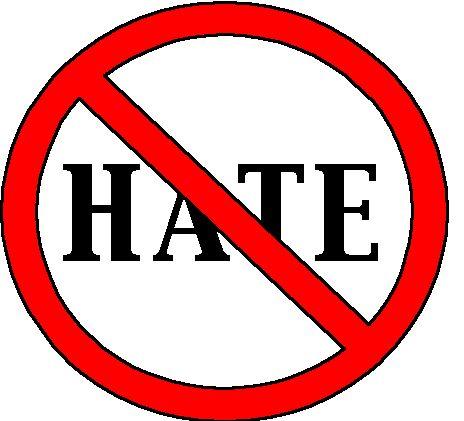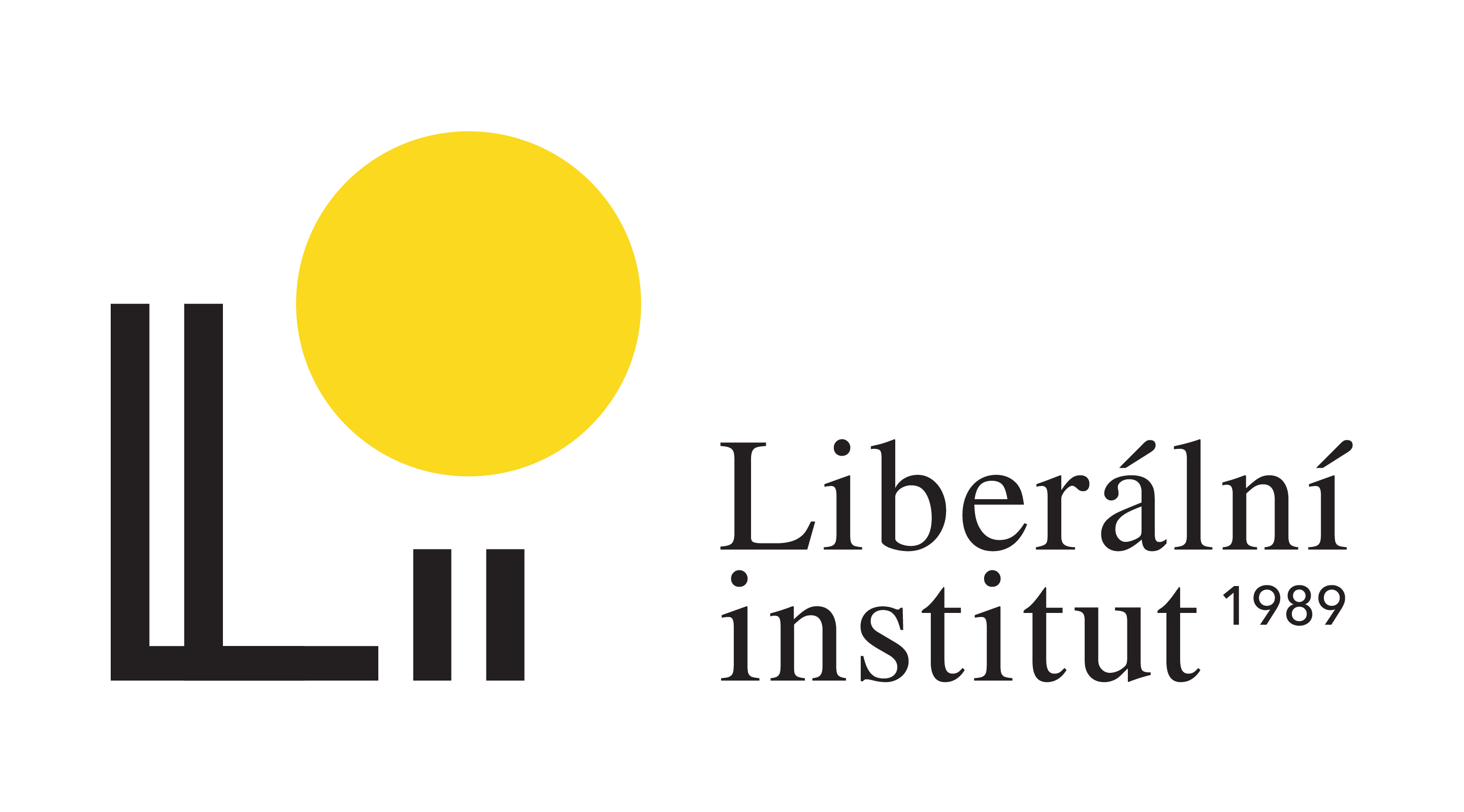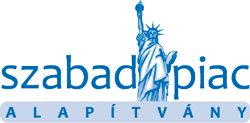The way we fight against anti-Semitism cannot be granted as a merit or the humanitarian gesture. It’s neither only about the struggle for the dignity of the Jews, but in the same way it’s our struggle for our own dignity. It’s about every person’s dignity. Generalization, characteristic for the very essence of anti-Semitism, leads beyond the moral categories which cannot be breached if we don’t want our civilization to fail.
Tadeusz Mazowiecki (“Antisemitism of good and kind people”, 1960)
The common perception amongst many people across Europe is that Western Europe can be described as more tolerant than Central-Eastern part of the continent. This looks like mutual perception of people from both sides of the former Iron Curtain.
In fact, the truth is more complicated. That’s why we wish to look at the real situation. Is it true that racism is not so common a problem in Western Europe? Is it better – despite the legal situation – to be gay in Paris than in Warsaw?
By taking hate speech as an example in Poland and France, we would like to try to define the similarities and differences between European countries.
Considering the necessary oversimplifications, we can perceive France as a good example of Western European country, as many social processes in modern history of France are significant to most of the countries with post-colonial history that we could name “Western.” Just to name some of them: the sexual revolution, the European integration…
On the other hand, Poland – as a country situated “between Germany and Russia” -experienced fate similar in many ways to that of any other Central-Eastern European country, where the processes, like sexual revolution, happened a bit later.
Before we start, we must emphasize one thing – we realize that hate speech can be based on various criteria like: age, gender, disabilities, social status etc. However, as the Conference is about nationalism, we’d like to focus specifically on cultural- and ethnic-related forms of hate speech, as well as the LGBT people, who are also a vulnerable target of extreme-right groups especially – but not only! – in Central-Eastern Europe.
Foreigners
The general perception of everyone who doesn’t fit the criteria of the majority group is similar in Poland and in France.
Poles generally perceive Western Europeans as welcome guests in Poland. They don’t see the problem with immigration from the countries that are culturally similar, like Belarus or Ukraine.
We can, however, observe some specific manner of treating people from the former USSR as our poor brothers and sisters, who need sympathy and care. It’s hard to realize for many people that someone from the former USSR could achieve success in life. Usually, they’re associated with simple physical work, e.g. “Ukrainka (Ukrainian woman)” is a synonym of a cleaning lady or a babysitter. One year ago, in a Polish radio broadcast, the hosts made dirty comments about Ukrainian people, just a day after Ukraine national football team lost their last match at Euro 2012. The first of the hosts, Kuba Wojewodzki, started with the claim that “he acted like a real Pole – he threw his Ukrainka out of the house”, and the second one replied: “I won’t pay her cause I don’t have to, and if she were more beautiful I would’ve raped her”. This program caused many controversies in Poland and Ukraine, and certainly didn’t have a positive effect on mutual relations. Many people defended the hosts, claiming that it was only a pastiche of the approach of Polish upper-middle class towards their immigrant workers. This case is especially meaningful, as these clearly inappropriate words were said, and later they were defended not by right-wing bigots, but by moderate young people, often with really open minds and without bad intentions.
In France, xenophobic attitudes also vary according to the origin of the people seen as “foreigners.” The European citizens: Germans, the English, the Polish or the Portuguese etc. are relatively spared xenophobic discourse.
However, recent incidents showed that racism and incitement to racial hatred targeting “visible minorities” are far from being eradicated in France. Even if we thought the so-called “colonial” racism disappeared, Christiane Taubira – Minister of Justice born in French Guiana has been the subject of racist attacks lately. Last month, Anne-Sophie Leclerc, FN candidate in the municipal elections in Rethel, compared the Minister to a monkey. Besides a pitiful photomontage, she added “This image says it all. Ultimately, I prefer to see her hanging in a tree than at the Government (…)”. A few days ago a similar incident took place in Nantes, while during a protest against gay weddings a young teenager threw a banana at Christiane Taubira, shouting “Here is a banana for the monkey”. As one of Le Monde’s columnists claimed: “What made [it] possible is the daily repetition of another scene, more mundane but no less pernicious, which gradually we got used to. It’s getting common: somewhere, in a public place, someone makes a racist/misogynic/homophobic statement. People don’t protest, even if they disagree, because it always ends with someone saying: I’m tired of political correctness! and this is the end of discussion”
The Roma population is also a target of hate speech in entire Europe. Despite the tragedy of Roma people during the Second World War, and notwithstanding a long-lasting tradition of Romophobia in every European country, it’s not seen as really inappropriate to hate the Romani people. They are associated with being beggars and thieves, and are barely seen as valuable members of society.
In France, this idea prevails, and many people agree with the speech of Nicolas Sarkozy. In 2002, he said “How does it happen that in some of these camps we can see such beautiful cars, when there are so few people working?” Such ideas can sometimes lead to particularly dangerous hate speech. In July 2013, moving in a Roma settlement, the deputy mayor of Cholet, Gilles Bourdouleix , blurted out: “Maybe Hitler did not kill enough of those people.”
In Poland, the situation looks quite different when compared to other Central European countries, as Roma community is relatively small. However, we face the same type of stereotypes that one can hear from the mouths of well-educated and generally open-minded people. Last summer, radical neo-fascist organization called for the destruction of Bulgarian Roma’s camp in Wroclaw, luckily no one got hurt. The people responsible for the action used the term “Final Solution” to describe their plans toward the occupants of the camp…
Islamophobia
Islamophobia these days seems to be a common issue on the entire European continent. If the social and historical contexts of the “fear” of Muslims vary from one country to another, hate speech seems to be spreading exponentially in all of Europe. Countries like Poland “borrow” the discourse from the countries of Western Europe. The portrait of Arab/Muslim painted by the contemporary Islamophobes does not differ so much from the image of a Jew from the first half of 20th century.
Western Islamophobia seems to have flowered in the aftermath of September 11th, 2001, however, it has deeper roots in French society.
After decolonization of Algeria in 1962, immigration intensified in France and many immigrants were forced to live in very difficult social conditions. In the early 1980s the children of immigrants, started to claim equal rights. While those young people were born in France and grew up in French culture, they did not get the same opportunities as the other because they were seen as “Arabs”.
Despite the “Marche des Beurs” (March of Arabs), which brought more than 100,000 people to Paris in 1983, their voice was not heard. Meanwhile, the ‘80s showed a significant increase in the popularity of Front National in France. By this time, many young people – disappointed by the French reality – had turned their attention to Islam. In fact, Islam of the suburbs was the radical version of this religion. In 1998, the French national football team won the World Cup – by this time, the slogan “black-blanc-beur” (black-white-Arab) had already gained popularity, and people were really proud of their multicultural society. However, during the 2000s French society faced a significant increase in Islamophobia. In recent years, the debates about Muslims in France have brought large polemics. The issue of the ban on burqa has crystallized tensions in 2009, while the year 2013 saw the birth of the polemic around the street prayers.
Hate speech has swollen around these issues, and Marine Le Pen, the Front National president, denounced Muslims’ street prayers, calling them “occupation” without “armor” or “soldiers”, but “occupation anyway.” The integration of Muslims in France is seen as a threat to the principle of secularism. Despite such hate speech, many racist clichés about Arab people prevail in France, for example when a job is badly done, it is called ” Arab’s work.”
In Poland, the Tatar community is described as a model example of “Europeanization of Islam”. Tatars lived on the territories of Polish-Lithuanian state from the 15th century. It’s quite ironic that Jan Sobieski, a Polish king known for “preventing the Muslim invasion on Europe”, was also the one who brought Tatars – Muslim nation – to modern Polish lands. 9/11 was definitely a milestone for the Islamophobic resentment in Poland. People suddenly realized that there was a small Muslim community in Poland, and they became hostile to everyone with “Middle-Eastern approach” – even if they might be members of Armenian immigrant community – the people of the oldest Christian nation in the world.
The really sad reflection is how the image of Chechnyan refugees changed – from poor victims of Russian regime to a part of “Islamization of Poland”.
In 2010, the wave of Islamophobic feelings arose when the Muslim League in Poland started to build their cultural-religious center, which is known as the “mosque of Warsaw”. It was perhaps the beginning of what we could call a common fear of the Islamization of Poland. More and more people started thinking it was a huge problem. Internet discussions were filled with primitive comments.
Many Islamophobes refer to the situation in Western Europe as the “examples of the next periods of Islamization”.
The recent example, significant for Islamophobic resentment in Poland, is an event organized on Tuesday, 12th November, a day after Polish Independence Day. The debate’s name is: “’No’ to the new – wahhabist – mosques in Poland!” The cover photo presents a lady in burqa reading Quran while speaking to some crowd, and a well-known, spread-over-the-Internet picture from some demonstration (in UK, perhaps) with a guy holding “Islam will dominate the world” slogan.
We can take a look at the discussion on the wall of this specific event on Facebook, as it’s certainly not the only one, but quite an incisive example of how these stereotypes and oversimplifications about Muslims work in Polish society. In one of the discussions, people try to keep to the basis of the content, discussing the numbers of refugees – Chechnyan mainly – in Poland. At some point someone, however, comes up with a statement that “in Western Europe, it started similarly – just some people at one point, and now it’s inferno!” This is the kind of argument that can be easily repelled, however, it’s really hard to change the position of people who truly believe in these opinions. Even if this is not a “direct” hate speech, still it can justify stronger opinions, as there is a “necessity” to “deal with the problem”.
Then, within the same Facebook event, we have a link to an article about the debate in Gazeta Wyborcza, the leading national newspaper with leftist-liberal views. They are called “Koszerna”, which means “Kosher” newspaper by the participants. Someone admitted that it’s inappropriate to make anti-Semitic statements, because “many Israeli Jews struggle against Muslim extremists”. Someone immediately replied: “but in the meantime, the other Jews from the Israeli government force Poland to legalize ritual slaughter, which makes the Islamization of Poland easier. We shouldn’t take being skeptical about anti-Polish actions made by some Jews as a form of anti-Semitism”. But the official response of “Education Centre”, the organizers of the debate, is even “better”: “some Jews in Europe and America stay in one line with moonbats in their promotion of Islam and their struggle against anti-Semitism and anti-Islamism. And that’s what Wyborcza is doing – they’re not only a leftist and liberal, but also Jewish newspaper”[1].
Jews – new forms of anti-Semitism?
A recent report of the European Agency for Fundamental Rights (FRA) about discrimination and hate crimes against Jews in the EU members States demonstrates that anti-Semitism is still alive in European countries. In fact, the anti-Semitic incidents seem to have multiplied for the last ten years.
In France, the Government led major education campaigns after the end of the Second World War to put an end to anti-Semitism. These campaigns were very efficient for years and decades, it was very rare till the 1980s to hear anti-Semitic hate speech.
However, as the report on the status of anti-Semitism in Europe presents, nowadays 85% of French Jews believe that anti-Semitism is a problem in their country, against 66% at the European level. The French Jews feel the most insecure in Europe, for several reasons. The areas where the most respondents feel anti-Semitism is still alive are: the Internet, the media, expressions of hostility towards Jews on the street, and in other public places, etc…
In 2006, French society was particularly shocked by the case of a young Jewish man, Ilan Halimi, who was kidnapped, tortured and then killed by a ”gang of barbarians” led by Youssouf Fofana. Anti-Semitism played a role in the violence of criminals and their choice of a Jewish victim, supposedly wealthy.
On 19th March 2012, three children and a teacher were killed at a Jewish school by Mohammed Merah. For the first time since WWII, children had been killed in France only because they were Jews…
The problem of the resurgence of anti-Semitic crimes and hate speech in France might be partly explained by the perception of the Israeli-Palestinian conflict. According to the respondents of the FRA survey, the most frequent comment on Jews made by non-Jews is: “Israel is behaving towards Palestinians like the Nazis.”
It is a fact that some young people newly converted to what is called “radical Islam” in the French suburbs tend to consider that it is a duty of every good Muslim to fight against Jews for this reason. After the death of Merah – shot by the police – a proliferation of anti-Semitic speech on the Internet was visible. On some social networks, Merah was hoisted to the status of a martyr and some have called him a hero of modern times.
In Poland, we face a phenomenon of “anti-Semitism without Jews”. Since the Shoah tragedy and 1968 “anti-Zionist” campaign of Polish authorities, the Jewish community in Poland has been barely visible. Nevertheless, some stereotypes still lie in Polish people’s heads, and the word “Jew” can still be seen as a form of abuse in some communities, amongst school students for example. There were also some controversies around re-privatization of the properties nationalized by Communist authorities, which sometimes meant giving them back to the descendants of Jewish owners.
In Polish stadiums, it’s really common to use the word “Jew” as a form of abuse, especially towards specific clubs (a member of one football fan association has stated recently that calling someone “Jewish w..re” at the stadium is not anti-Semitism, but just a part of specific “folklore”).
However, we also face a different situation – Cracovia fans call themselves “Jews”, in the same way as Ajax Amsterdam and Tottenham Hotspur’s fans do so. There are a lot of controversies in the UK and the Netherlands whether it’s acceptable behavior, and perhaps we’re going to have a similar debate in Poland.
LGBT people
The history of recognizing LGBT rights is very different for Poland and for France. In France LGBT demonstrations first started in the late ‘70s, while in Poland, the milestone for the LGBT community was the first Equality Parade in Warsaw organized in 2001.
After the “sexual revolution” of 1968, LGBT movements began to organize in France. The first “Marche des Fiertes “(Gay Pride) was held in Paris in 1977, but the first significant gay pride took place in 1982.
This year, a significant step has been made under the leadership of the Minister of Justice, Robert Badinter, the age of consent for homosexual and heterosexual relations has been set at 15 years of age, while previously the age of consent for homosexuals was 18.
Since the early ‘90s, the debates in the National Assembly about the civil union (PACS-adopted in 1999) have raised a parliamentary guerrilla and have brought thousands of opponents to the streets. At that time, you could hear homophobic hate speech like: “And why not unions for humans and animals, then?”
A report from the SOS Homophobia Association reveals that France is less and less homophobic, but there’s still a lot to do. Last spring, the law on gay marriage provoked lots of tensions.
Opponents of the project gathered on May 26th, 2013, in Paris. More than a million – according to the organizers, and almost seven times less – according to the police. The organizers explained that they were not homophobic. However, using slogans such as “A Dad, a Mom, we do not lie to children” or “I do not want my mother’s name to be Robert,” the protesters have demonstrated a tactful homophobia. That means homosexuality exists and they have no problems with it, but there is no way that France should tolerate gay weddings: it would be a huge damage to the society if two men or two women could “officially” have children. Hate speech towards homosexuals was pouring over the Internet, a website reports all manifestations of hatred[2] .
In Poland, the milestone was set by the 2001 Equality Parade, the first Gay Pride public event in the history of Poland. As Szymon Niemiec, the man behind the first editions of Parades explained, it was the idea of some LGBT activists who were “tired of staying in the shadow.” At the beginning, for the first 4 years, there were small demonstrations with a few counter-demonstrations. The situation escalated in 2005, when the president of Warsaw, Lech Kaczynski, forbade the Parade. Despite the fact it was illegal, people gathered and the police (at the order of Ryszard Kalisz, the then Minister of Interior Affairs in the Democratic Left Alliance government) protected the manifestation. It has been the biggest Parade so far, the number of participants was comparable perhaps only to Europride held in Warsaw in 2010.
Then, from 2005 to 2007, there was a period when anti-homosexual resentment was clearly visible in the public sphere during the reigns of conservative-nationalistic-populist coalition. Młodzież Wszechpolska (All-Poland Youth), youth wing of the League of Polish Families, was the most active part of counter-demonstrations. One of the ministers from LPR (League of Polish Families) said that the homosexual activists “are not gays, but pederasts”. There were also projects of database registry with the data on every LGBT person in the country.
The idea of granting homosexual people specific civic rights is relatively new in Polish reality. Civil unions were – and still are – one of the main postulates of Equality Parades. In 2004, SLD (Democratic Left Alliance) senator Maria Szyszkowska prepared a project of legislation, based on French PACS. It wasn’t even put on the legislative track, perhaps it was perceived as unimportant even by the members of her own party, who were in charge at the time. Then some projects were put to legislation during the Civic Platform reigns, especially during the last 2 years – but they always ended the same way, with a lot of homophobic speech from conservative politicians.
Homophobia is still a common problem in Polish society. The lack of sexual education in schools leads to misunderstandings about the very fundamental nature of the homosexual orientation. Civil unions are perceived by some people as a form of “privilege,” and also we hear a lot about “homosexual propaganda.” “Zakaz pedałowania,” that can be translated as “No homosexual propaganda” (and it’s really the gentlest way we could translate this vulgar slogan) is a slogan present at every major counter-demonstration during equality parades. Recently, it has appeared on the window of a pub in Warsaw (from the inside). The owner of the place proclaims it’s his opinion, and he feels “harassed” when he is “forced to see one guy kissing another”. It might make some sense, if only homosexuals could really do it on Polish streets without any fears…
The Internet is also a place where we can almost literally touch homophobia, expressed in almost every discussion about homosexuals on Facebook and other popular websites…
The issue of transsexualism remains a taboo in France. Until 1979, the medical transsexual surgeries had been forbidden. In this area, the European case law has influenced the French law. France was sentenced in 1992 by the European Court of Human Rights for not accepting to change the gender of a transsexual in administrative papers.
In France, transsexuals can expect a change in gender status if they have made a radical physical transformation that includes sterilization. Change of marital status in France is hell. When you’re requesting, you pay out of your own pocket, you will have your vagina examined by a doctor to check whether you are a woman and during that time they call you ‘sir’. “I call this state-assisted rape” said Mme T, a transsexual.
In 2011, Anna Grodzka was elected the first openly-transsexual Member of Parliament in Poland. Her election was a milestone in the perception of transsexual people’s problems in Poland, as it had never ever reached headlines before. She was the first politician who proposed legislation that could make a transsexual’s life easier. It was also the first time that major columnists and politicians started discussing these issues. Not everyone, however, was mature enough to face the situation.
Especially, national-conservative politicians spread hate speech, with Janusz Korwin-Mikke – outside-parliament, controversial conservative-liberal (in the Ron Paul style) politician, who used the name “Grodzkie”, which is a neutral form, characteristic of the things or animals rather than human. We won’t even mention all the despicable things you could find about Ms. Grodzka on some Internet websites…
Where’s the problem?
Hate speech is a common phenomenon, in Poland and France. But moreover, it’s a phenomenon that affects the whole Europe in quite a similar way.
At last, we can ask ourselves what the real nature of hate speech is. Kenan Malik, Indian-born British philosopher and biologist, tries to defend the right of “bigots” to voice their opinions, even the most nonsensical ones[3]. It’s sometimes hard to distinguish between ridiculous statements and hate speech. We should realize, however, that there are some specific areas where we should be even more aware of the influence of oversimplifications, which can be potentially the reason for improper statements and actions.
Also, we too often forget about it – one cannot understand the importance of human dignity until he/she personally faces its consequences. You cannot change your skin or your sexual orientation, therefore, any bad stereotype will affect you and in some circumstances even change your life for worse. It’s not only about extreme cases, like Peter Mangs “hunting” for immigrants in Malmo or Anders Breivik’s actions, it’s about the approach of majority groups in daily situations. In this way, we can debate whether we should focus more on penalizing hate speech, or on preventing hate speech to spread by other means – perhaps we should follow both ways, with all respects to the primary role of the idea of free speech.
Forms of hate speech vary from one country to another, the victims of hate speech are not necessarily the same, and yet when you look closely, there are a lot of similarities when comparing the xenophobia, homophobia and anti-Semitism in France and Poland. While Poland is often seen in the West as a racist, homophobic and anti-Semitic country, the situation in France is not more glorious.
It is important that Western Europeans are also aware that the situation is not necessarily “better” at home, just as it is essential that Eastern Europeans realize that their country does not have such a significant delay in that matter.
It is the whole European continent that suffers from this problem in a similar way. That’s why the European Union should make much more effort to prevent hate speech in the member states. We can somehow tolerate (but not necessarily accept) the situation when some countries don’t recognize same-sex civil unions or marriages, but certainly we can’t accept a situation when LGBT people, or any other vulnerable group, are not protected from discrimination and hate speech, because some countries don’t include them in antidiscrimination law. Common standards in such matters are the absolute minimum that the EU should implement.
But despite government’s efforts, we can do a lot as citizens to prevent specific forms of hate speech. It doesn’t matter whether we do it online, by reporting racist or homophobic materials on social networking sites, or by challenging other forms of preventing hate speech online, or if we do it offline – the problem is the same, and we can’t really separate these two processes.
Acting offline doesn’t necessary have to be much more tiring – we in Projekt:Polska e.g. run HejtStop campaign. We combine online and offline methods – everyone can participate by sending a picture of offensive “graffiti” on the wall, then we try our best and report the situation to the administrator of the place. Sometimes, we offer our help – like in June 2013, when we gathered people to erase offensive slogans marked on La Mama Nigerian restaurant elevation. Recently, on 9th November, we erased racist slogans in a neighborhood filled with “White Power” slogans and Celtic crosses.
As we’ve mentioned above, we can give a number of examples on hate speech against specific groups. Some – like Islamophobia – don’t differ so much around the continent; some – like homophobia – look different in various countries. One thing is common amongst all the haters in Europe, however – they base their opinions on simplified, negative images of specific groups.
In this way, we can refer to the words spoken in 1960 by Tadeusz Mazowiecki in the city of Krakow. These words, used as motto of this piece, seem to be valid and worth recalling in 2013, as they can refer to any other oversimplifications – not only against Jews, but also against Muslims, LGBT people, foreigners….
The article was written for Developing a liberal strategy against nationalism online, held in Kraków 15-16 November 2013, organized by Projekt: Polska Association and European Liberal Forum
[1] The other comments have been written in a similar manner. Definitely, the problem of Islamophobia is a serious threat in Polish society. Another sad reflection about this event is the place of debate. The place is called “Niespodzianka” cafe, and it’s clearly a reference to the historical place where Solidarity supporters gathered in 1989 during the campaign for parliamentary elections. The place is owned by Stowarzyszenie Wolnego Słowa (Free Speech Association), an organization of Solidarity veterans. It’s really sad how the symbol of unity can be used to divide people into “better” and “worse” ones …
[3] http://freespeechdebate.com/en/discuss/why-hate-speech-should-not-be-banned/

























